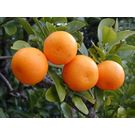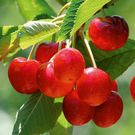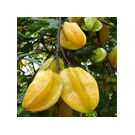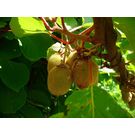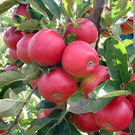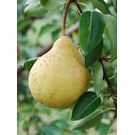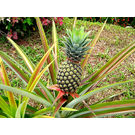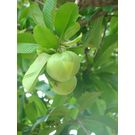Plum Fruit Plant

Description
Botanical name: Prunus
Plant type: Fruit
Sun exposure: Full Sun
Soil type: Loamy
Bloom time: Summer, Fall
Plums are a good choice for beginner gardeners who want to grow fruit trees. Plum trees are widely adapted, more compact, and require less treatment than most fruit trees. Not only are plums delicious, but the trees themselves add beauty to any garden.
Planting
Be prepared to plant more than one type of plum tree because many types require cross-pollination to produce fruit, although there are some varieties that can produce fruit on their own.
It is also important to choose a type that will work with your location. There are three categories of plum trees: European, Japanese, and Damson. Hardy European types work in most regions across the U.S. The Japanese types flourish where peach trees flourish. There are also American hybrids that work well in regions where neither European or Japanese types flourish.
Plant plum trees in well-drained, moderately fertile soil in full sun. Avoid planting in low areas where frost may settle, as the frost will damage your trees.
If possible, find sheltered position, such as a south- or west-facing spot out of the wind. This will help the plum tree set fruit.
For container-grown trees, remove the plant from its pot and remove any circling roots by laying the root ball on its side and using shears to cut through the roots.
For grafted trees, keep the graft union 1 inch above the soil line when planting.
Dig a hole that is a few inches deeper and wider than the spread of the roots. Set the tree on top of a small mound of soil in the middle of the hole. Be sure to spread the roots away from the trunk without excessively bending them.
Space standard-size trees 20 to 25 feet apart. Space dwarf trees 15 to 20 feet apart.
Care
Thinning plum trees is important to prevent branches breaking under the weight of the trees. If branches do break, prune them back into the undamaged wood, ideally cutting back to a natural fork to avoid leaving stubs.
Be sure to water the young trees heavily every week during the first growing season to help promote growth. Then, water regularly. It's best to water the plant deeply at the soil line, then let the soil dry out (though not completely), and then water again.
Water your tree well into mid-October to give it plenty of moisture through the winter months.
Do not fertilize young fruit trees unti they have set a crop.
Once established, fruit production requires regular fertilizing all year long. If there’s good fruit set, fertilize with one pound calcium nitrate
per tree or 1½ lb. 10-10-10. Cut back the nitrogen in fall and winter to avoid encouraging new growth in those seasons.
In the fall, rake away all debris and fallen trees.
Prune early spring or mid-summer to avoid infection. The best time for pruning is usually spring for young trees and mid-summer for established ones.
Do NOT prune in the fall or winter injury or infection may occur.
Did you have any pest issues? Talk to your local extension or garden center about a spray program.
To prevent winter injury: Consider a tree wrap or guard around the lower trunk, especially for a young plum tree.
Keep an eye on the lower bark and branches for mice or rabbit injury; if this could be a problem, you may need to install tree guards or fence in young trees with chicken wire for the winter.
Pruning: Japanese Plum
If you have a Japanese type of tree, the best pruning method is to create an open center shape. In the summer of the first year, cut the vigorous shoots that form on the top of the tree by two or three buds. After about a month, check the tree. As soon as you have three wide-angled branches, spaced equally apart, cut back any other branches so that these three are the main branches. In the early summer of the second year, cut back the branches in the middle of the tree to short stubs and prune any shoots developing below the three main branches. After the third year, remove any shoots in the center of the tree to keep its shape.
Japanese types require heavy pruning to help keep them in shape and to produce better fruit. It is also good to thin out the fruit on these types of trees. You should space the plums about 3 to 4 inches apart on each branch.
Pruning: European Plum
If you have a European type of tree, the best pruning method is to create a central leader. This shape features a central trunk with branches that spiral out every 5 to 8 inches, making sure that no branch is directly above another. The training for such a system begins in the early summer of the first year, during which time you should remove any shoots that form within 18 inches of the ground. The end result should resemble a Christmas tree.
European types do not require fruit thinning because they do not produce as much fruit as Japanese types. However, the fruit on these types should be spaced about 2 inches apart on each branch.
To help control pests and diseases, remember to prune your trees to keep them open. You can also mulch around the trees in the spring to help control weeds, but be sure to remove the mulch in the late fall so that no pests use it over the winter. You can also lightly cultivate the soil around your trees in late spring to eliminate any pests in the soil.
Pests
Plum trees can suffer from silver leaf disease, honey fungus, bacterial canker, pocket plum, plum aphids and plum moth.
Harvest/Storage
Harvest have the best flavor when left to ripen on the tree. You can tell when plums are ripe by applying gentle pressure with your fingers. If the skin of the fruit feels soft, then it is ready to be picked.
Plums should come off the tree easily when you're using only a slight twist.
Unfortunately, the fruit does not store for long, so must be eaten or preserved. You can also pick the fruit when they are still slightly firm and store them in a cool place to fully ripen.
The best place to store plums is in the refrigerator. The best temperature for storing plums is about 31° - 32°F with relative humidity around 90% - 95%; if kept at this temperature, plums may last for 2 to 4 weeks.
You can also store plums by making jams or jellies.
Plums can also be stored by freezing or drying them (dried plums are prunes).
You may also be interested in
Look for Similar Items by Category
- Home > Fruit Plants > Plum


